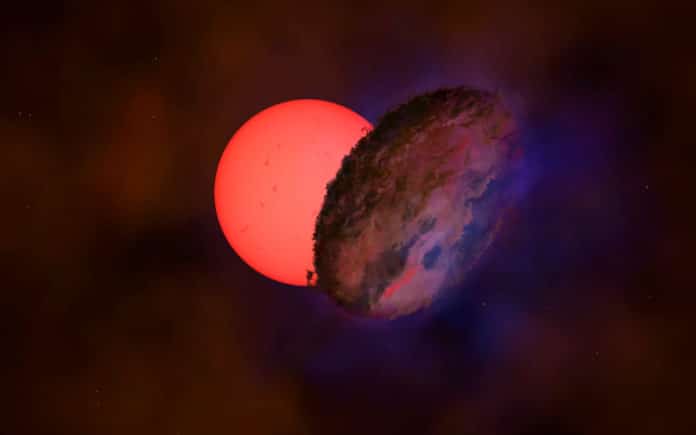An international team of astronomers has observed a giant star ‘VVV-WIT-08’ lurking near the heart of the milky way. Located almost 25,000 light-years away, the star is believed to belong to a new class of “blinking giant” binary star system.
In this star system, the star is 100 times larger than the Sun and eclipsed once every few decades by an as-yet-unseen orbital companion.
Telescope observations have disclosed that this giant lurking star is dimmed by 97%, i.e., decreasing in brightness by a factor of 30 and then slowly returned to its former brightness.
Co-author Dr. Sergey Koposov from the University of Edinburgh said, “It’s amazing that we just observed a dark, large and elongated object pass between us and the distant star, and we can only speculate what its origin is.”
The star is located in a dense region of the Milky Way. Hence, the star would probably have a large number of dark bodies floating around it.
VVV-WIT-08 was found by the VISTA Variables in the Via Lactea Survey (VVV), a project using the British-built VISTA telescope in Chile and operated by the European Southern Observatory. The dimming of the star was also observed by the Optical Gravitational Lensing Experiment (OGLE), a long-running observation campaign run by the University of Warsaw.
It is not the first blinking star astronomers have discovered. Astronomers have previously discovered one such giant star called Epsilon Aurigae, eclipsed by a huge dust disc every 27 years but only dims by about 50%. Another giant star called TYC 2505-672-1 holds the current record for the eclipsing binary star system with the longest orbital period—69 years—a record for which VVV-WIT-08 is currently a contender.
Project co-leader Professor Philip Lucas from the University of Hertfordshire said, “Occasionally we find variable stars that don’t fit into any established category, which we call ‘what-is-this?’, or ‘WIT’ objects. We don’t know how these blinking giants came to be. It’s exciting to see such discoveries from VVV after so many years planning and gathering the data.”
The discovery was led by Dr. Leigh Smith from Cambridge’s Institute of Astronomy, working with scientists at the University of Edinburgh, the University of Hertfordshire, the University of Warsaw in Poland, and Universidad Andres Bello in Chile.
Smith said, “There now appear to be around half a dozen potential is known to star systems of this type, containing giant stars and large opaque discs. There are certainly more to be found, but the challenge now is figuring out what the hidden companions are and how they came to be surrounded by discs, despite orbiting so far from the giant star. In doing so, we might learn something new about how these kinds of systems evolve.”
The study is published in Monthly Notices of the Royal Astronomical Society.
